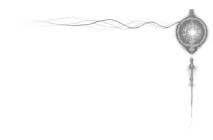
Images of computers: a prehistory - hopes and fears realised?
John van Dyk
dr Samuel Mann
Peter Brook
School of Information Technology and Electrotechnology
Faculty of Art and Technology
Otago Polytechnic, Dunedin, NZ
smann@tekotago.ac.nz
Abstract
The computer has become since the 80's, a ubiquitous image both pictorially and in text. The pseudo technical language of the IT world pervades modern idioms, marketing type and analogies. But in a world
without computers, this digital overlay would be absent from all forms of art, literature, entertainment and common parlance. This paper explores the intrusion of computing and related technical devices into various media over the centuries since records were first kept. Some changes in attitudes towards computing are explored and themes associated with dehumanization and post life machines, are presented as embodied messages inserted with varying consciousness by artists of all persuasions.
1. Introduction
The computer has featured as a subject in the arts for many years. While the portrayal of the computer in popular films is well known, the extent to which computers appear in other forms of the arts such as painting, literature, and music is less well understood. As with all art, depictions of the computer can be assumed to communicate some meaning or message from artist to viewer. Starting with artistic representations of the computer's forerunners, and then focusing on more recent examples, this study surveys the corpus of relevant images, and examines the historical issues that artists have deemed to be of importance. It is proposed that images of the computer convey an underlying meaning, or meanings, and that those meanings have changed over time.
2. Approach
The primary research for this paper was by way of locating and evaluating visual art, performing art and literature. Techniques of literary and artistic criticism were used to reflectively explore possible meanings contained in images.
The term "computer" here goes beyond the conventional desktop computer, and even midrange, mainframe and supercomputer equipment. The overwhelming proportion of computers in existence today are in fact microprocessors, the units that control all manner of devices, from toasters to car engines, ventilation systems to heart monitors, and, of course, robots. In addition, to put the modern-day computer into a chronological perspective, certain forerunners of the computer, such as automata and industrial machines - particularly where programmable, are included where appropriate in their historical contexts. This paper aims to include a representative balance of images, not only chronologically, but also between different art forms and media and between famous and lesser-known works.
There are many photographic images-such as those documenting Pascal's calculator, Babbage's analytical and difference engines, and early electromechanical and electronic computers-which, over time, have acquired an iconic status. Associated more with recording the history of the computer, these images have been considered outside the scope of this research. So too the majority of early technological developments such as time-keeping devices, sextants,